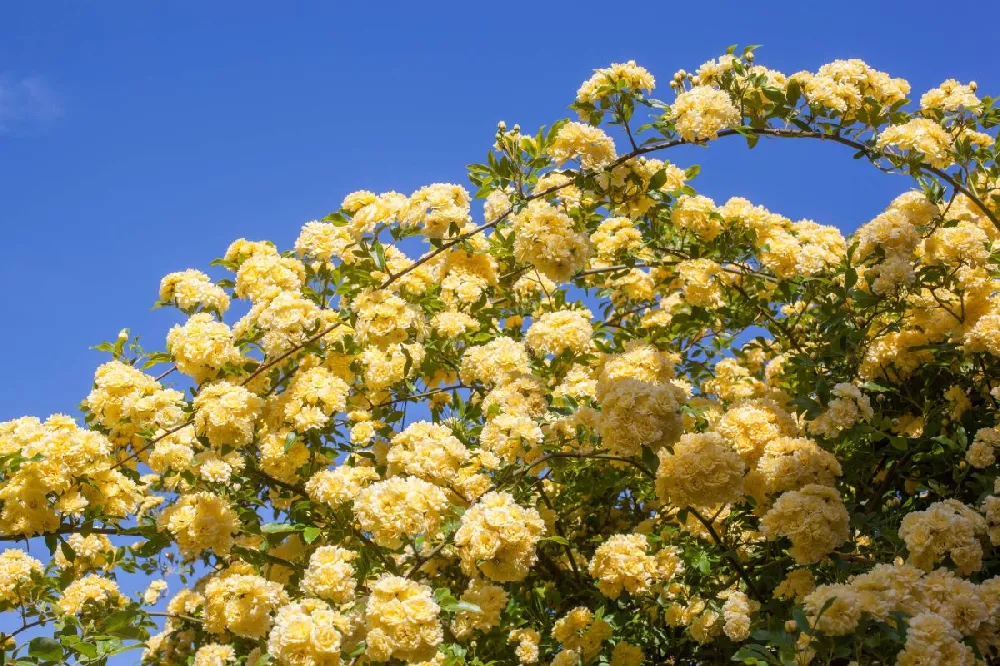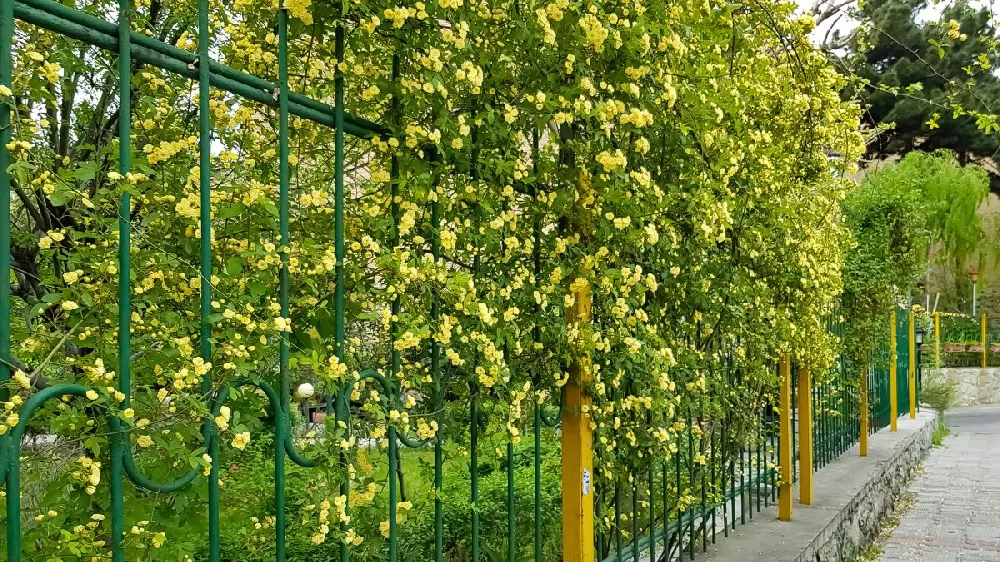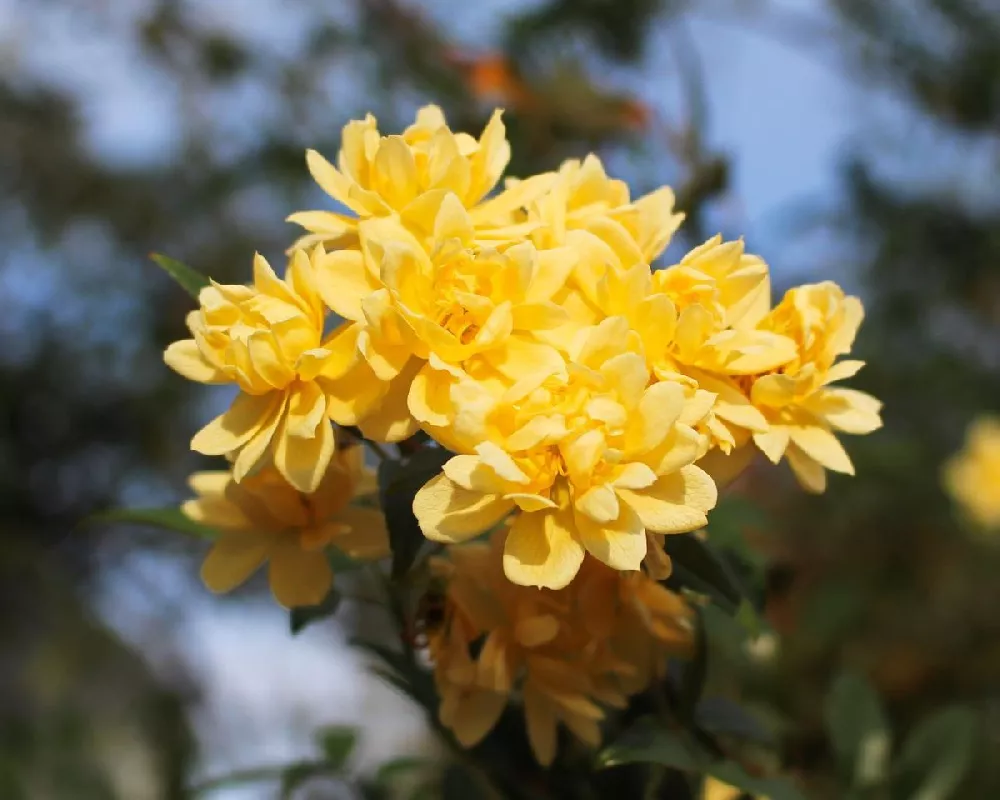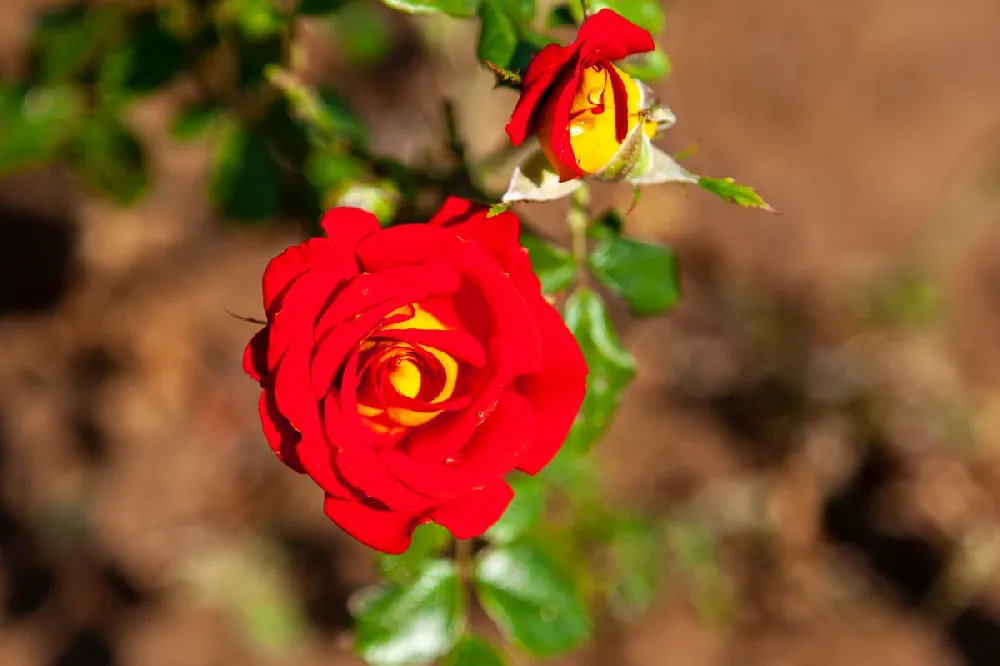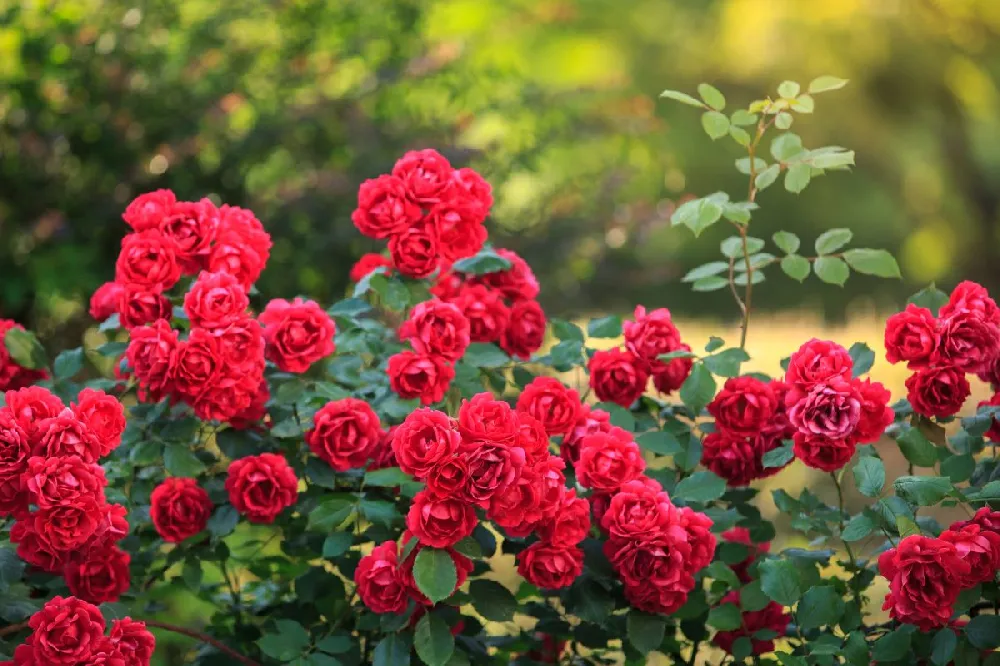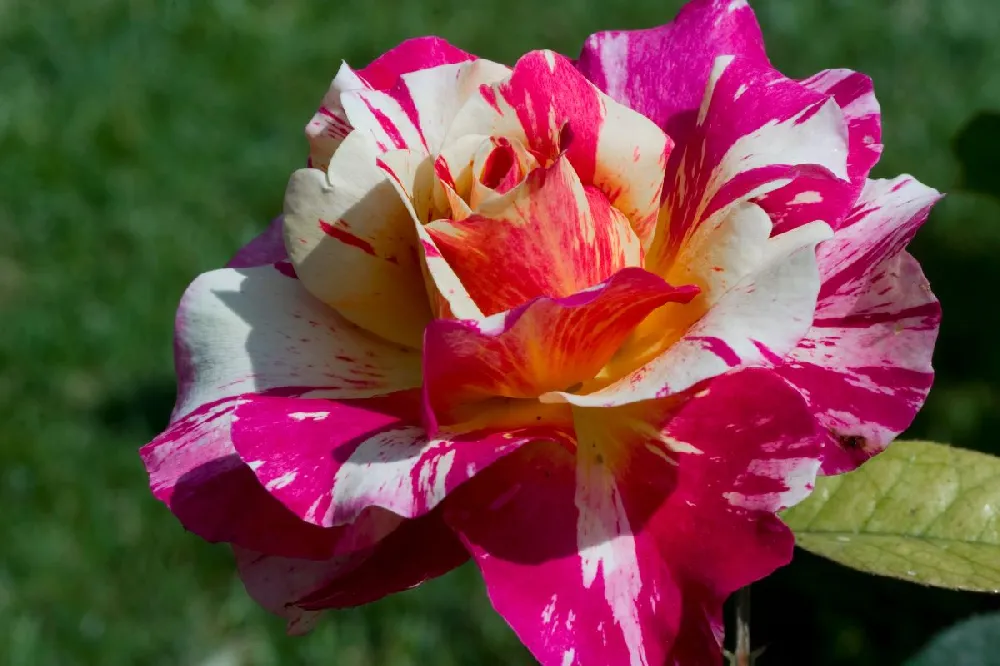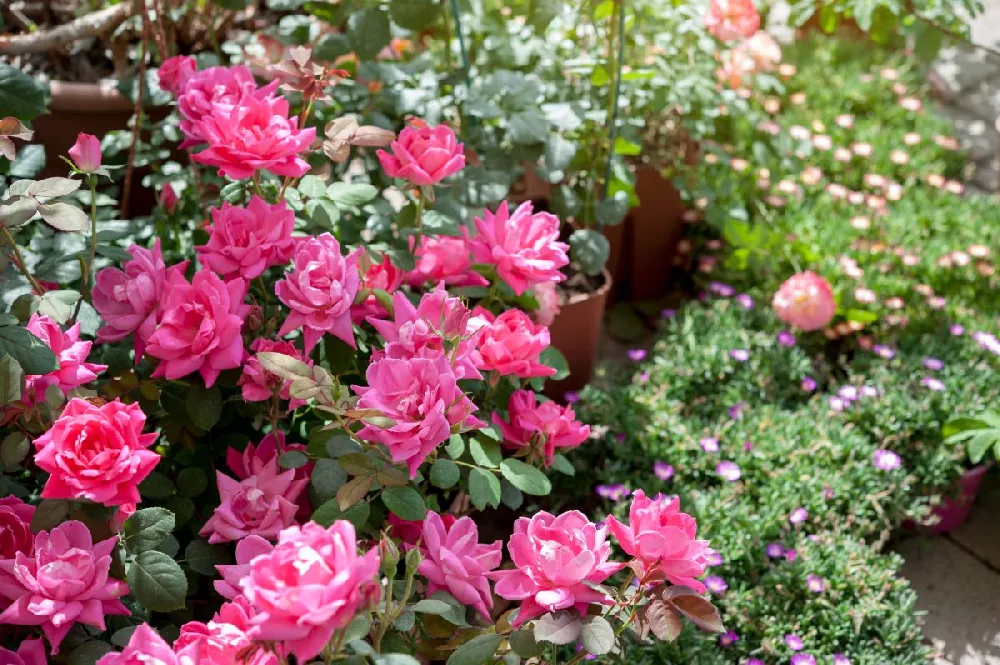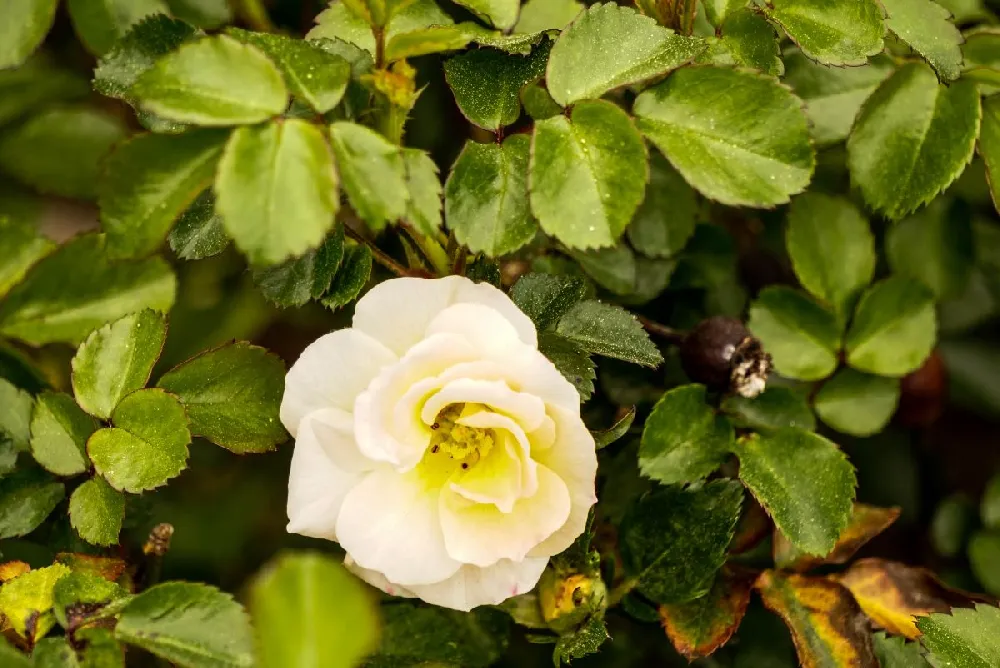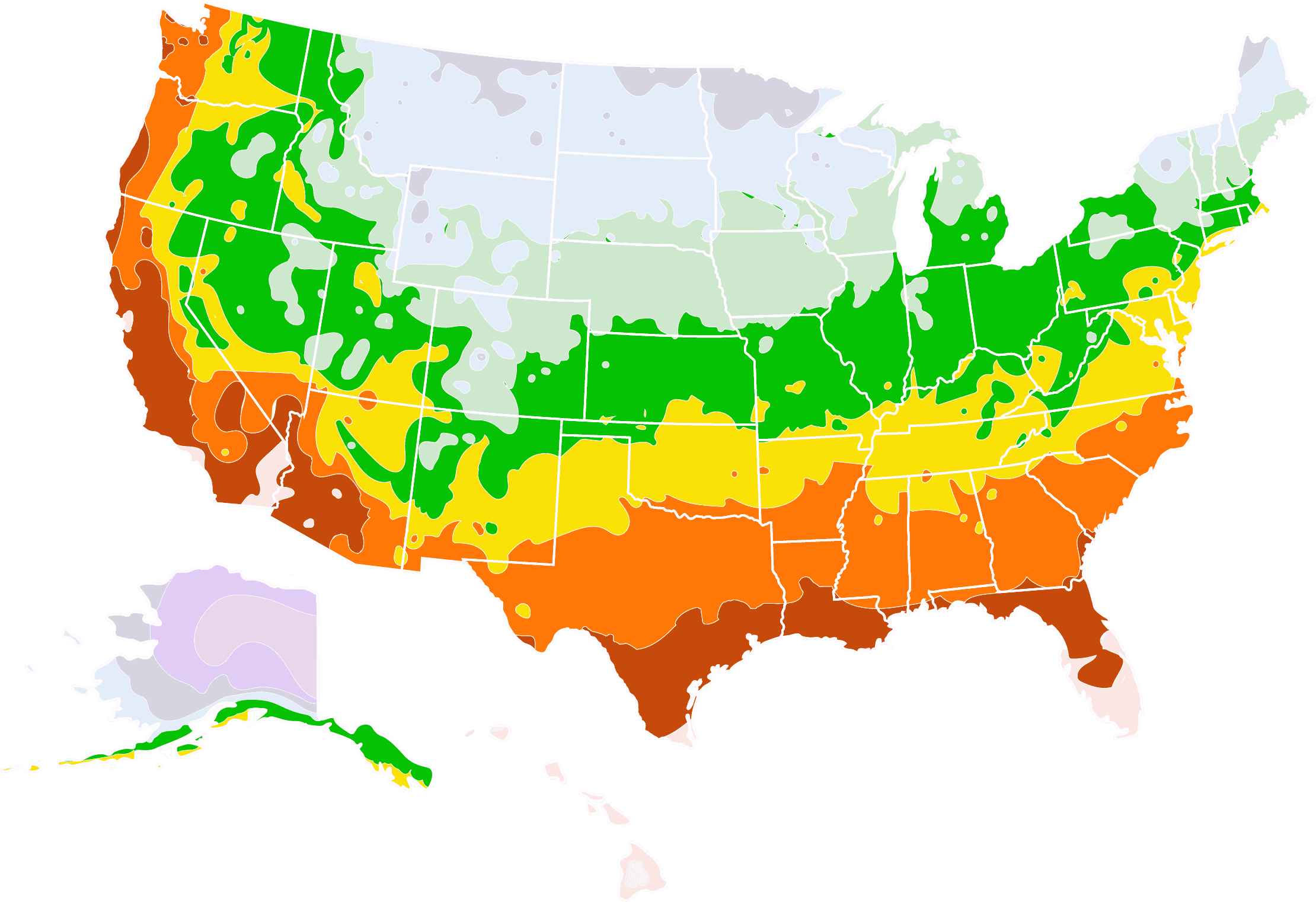- Home >
- Ornamental Plants >
- Lady Banks Rose
Lady Banks Rose for Sale - Buying & Growing Guide
The Lady Banks climbing rose, Rosa banksiae 'Lutea,' is a spectacular bush that brightens the summer garden with profuse, sunshine-yellow blooms that blanket the branches in spring or early summer. Since this climbing bush can reach a height of 20 feet and produce as many as 50,000 blooms a season, you can imagine how impressive it looks in bloom when climbing an arbor or wall. Lady Banks is an heirloom variety originating in China that was brought to England in 1924, where it has had tremendous success, earning a prestigious Award of Garden Merit from the Royal Horticultural Society in 1993. This nearly-thornless variety is not attractive to deer or other wildlife, and, once the blooms have faded, it offers a handsome silhouette that is semi-evergreen in the South. Here are some more reasons to add one to your garden today:
- Its flowers have a light, violet-like fragrance.
- It has a vigorous growth habit, with few natural pests or diseases when grown in full sun.
- The Lady Banks rose is somewhat drought-resistant once established.
Enter your zip code to find nearby stores that may carry this plant.
Plant Care
Sunlight

The Lady Banks rose thrives in full sun, with six or more hours of direct sunlight a day.
Watering
Water once a week, or whenever the soil is dry 2 inches below the surface.
Fertilizing

Use a liquid fertilizer for your Lady Banks rose that is formulated specifically for rose bushes.
Planting and Care
Planting instructions
SIte your Lady Banks rose in soil that drains well and receives at least six hours of sun a day. It’s best to place this rose where it will have a wall, arbor, or other strong support to grow on. Unpot your plant and tease out any encircling roots, which can girdle the tree and slowly kill it. Dig a hole that’s as deep as the root ball and twice as wide. Place the bush in the hole and, while holding it upright and steady, fill in around the roots with topsoil, tamping down as you go to eliminate air pockets. Water thoroughly. Apply a 2- to 3-inch layer of an organic mulch, such as bark chips, around the root zone to conserve moisture and hinder weed growth, but keep it from touching the trunk to avoid rot.
Watering and nutrients
For the first few weeks after planting, water your rose every few days. Once you see new growth appearing on the branches, you can taper back to a once-a-week watering, giving it about an inch of water each time. If you’re experiencing very hot or dry conditions, it may need additional supplemental watering. Fertilize with a balanced product that is designed for roses or one that is formulated for landscape trees and shrubs, following package directions.
Pollination
The Lady Banks, like all roses, has “perfect” flowers, meaning that the male and female reproductive organs are contained in the same flower. This makes pollination simpler, and the many pollinators that are attracted to these flowers are easily able to fertilize the female stigma. The fertilized flowers fade and become rose hips, which contain the seeds.
Pruning
Your Lady Banks rose does not require extensive pruning. Monitor it for dead, damaged, or diseased branches, which should be removed when you see them. If you wish to prune for shape, do so after the flowers are finished blooming. Flowers grow on old wood, so light pruning is best. Left unpruned, the vining bush will grow up the side of a building or trellis.
Pests and diseases
Pests that may appear on the Lady Banks rose include aphids, red spider mites, and scale insects. A healthy plant can usually fend off minor infestations with little problem. If insects become a problem, consider releasing predatory insects, such as ladybugs and lacewings, which will eat the problem bugs. Diseases of the rose include rose rust, powdery mildew, and downy mildew. Prune out and destroy infected branches, and maintain good airflow around your plant to minimize problems.
Achieving maximum results
One way to grow Lady Banks roses successfully is in a container. This makes it possible for gardeners who live north of its natural range to grow this lovely plant, since they can bring the container inside for the winter months. Choose a container that is roughly twice the size of the root ball with good drainage in the bottom. Keep in mind that container-grown plants need more water than those grown in-ground. Every few years, it’s a good idea to unpot your rose and refresh the soil. At that time, you may want to increase the pot size, as well, if the roots seem constrained.
FAQs
Where does the Lady Banks rose grow best?
How is the Lady Banks rose best used in a landscape?
The Lady Banks rose should be placed where there is a secure structure that it can climb, such as a wall, pergola, or arbor. It is well-suited for cottage or rustic gardens, and multiples planted in a row could be used, when supported, as an attractive windbreak or privacy screen. This rose would look elegant planted in a decorative ceramic or terracotta pot — consider placing one on either side of your front door or patio entrance.
Is the Lady Banks rose evergreen?
It is considered semi-evergreen. In the northern parts of its range, it may lose some or all of its leaves for a short period during the colder months, but it rejuvenates quickly in early spring, and the attractive dark green foliage is profuse throughout most of the year.
Compare Similar Products
You can't add more Product Name - Product size to the cart.
OK